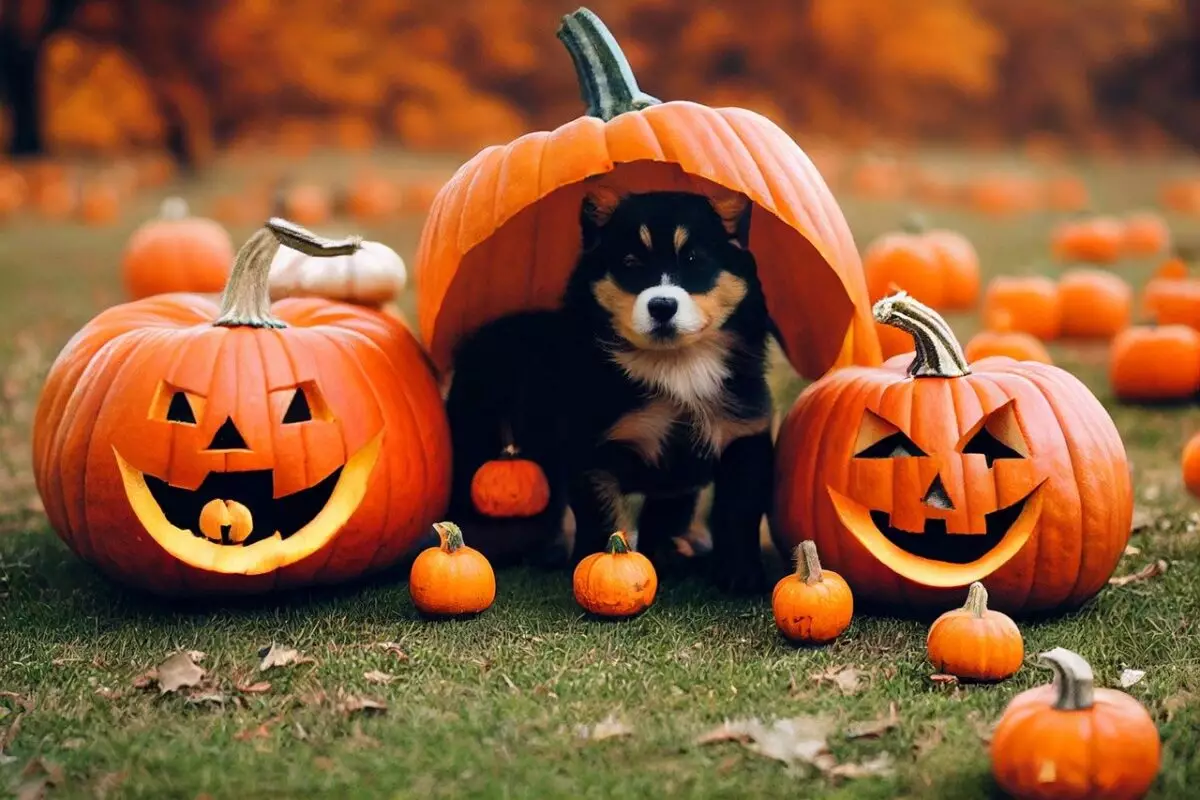Halloween is an occasion that brings excitement and joy for many, but for our pets—particularly dogs—the season can pose several unique challenges. From eerie costumes to loud celebrations and tempting candies, Halloween is a complex landscape that can be overwhelming and even hazardous for our furry friends. Understanding the potential risks and implementing preventive measures can help ensure that Halloween remains a safe and fun experience for both you and your canine companion.
Halloween is widely known for its candy; however, many of these sweet treats can be toxic to dogs. Items such as chocolate, xylitol-laden candies, and raisins are especially dangerous. It’s crucial for dog owners to keep all sugary items securely stored out of reach and educate children about the importance of maintaining candy safety. Additionally, the wrappers themselves can lead to choking or digestive distress if ingested. In the unfortunate event that a dog consumes something harmful, immediate communication with a veterinarian is essential for guidance and treatment.
The fun of decorating for Halloween can easily turn hazardous for dogs. Many common decorations, including fake cobwebs, glow sticks, and lacey materials, can be choking hazards. Moreover, the presence of candles and carved pumpkins exposes pets to bite risks and potential fires. Opting for pet-safe alternatives, such as LED lights or battery-operated candles, can mitigate these dangers. Furthermore, it is wise to position decorations out of your dog’s reach, and if you choose to use real pumpkins, ensure they are non-toxic and free of sharp objects or materials that could harm your pet.
While dressing dogs in costumes can be amusing and adorable, one must consider their comfort first. Costumes that don’t fit correctly may limit a dog’s movement and lead to stress or anxiety. It’s advisable to allow your dog to acclimate to the costume gradually. If they display any signs of distress, it’s best to forgo dressing them up altogether. Always ensure the outfit doesn’t contain small components that could be chewed off and swallowed.
Halloween can introduce an array of stimuli—doorbells, strangers in costumes, and loud noises—that can overwhelm dogs. Establishing a quiet retreat, such as a designated room or crate, can provide a sanctuary if your dog feels anxious. Fill this space with their favorite toys, blankets, and treats to allow them to relax. Consider playing soft music or using a white noise machine to alleviate outside distractions further.
If you decide to take your dog out on Halloween night, visibility is key. The streets can be darker with trick-or-treaters, increasing the likelihood of accidents. Accessorizing your dog with reflective gear, like a bright collar or harness, can enhance safety during evening walks. Additionally, carrying a flashlight can provide further assurance as you navigate your surroundings.
The constant ebb and flow of trick-or-treaters can pose a significant danger to dogs, with the front door providing numerous opportunities for pets to escape. To prevent this, it’s best to keep your dog secured, either by using a baby gate, crate, or a separate room during peak visitation times. Taking these precautions protects your dog from both escaping and becoming overwhelmed by the night’s festivities.
Halloween gatherings often lead to an excess of food. Many common human foods pose risks to dogs, including onions, garlic, grapes, and high-fat or spicy foods. If hosting a party, clearly communicate to your guests about not feeding snacks to your dog and ensure that all food is out of their reach. Offering dog-friendly treats allows your pet to indulge safely and share in the celebration.
Dogs can sometimes be intimidated by strangers, especially when they are garbed in costumes. Encouraging a calm environment is crucial. Allow your dog to engage with visitors at their own pace. It’s essential to recognize their behavioral cues and offer positive reinforcement for calm behavior, which can facilitate a better experience with costumed individuals. Avoid crowded events, as excessive stimulation can lead to anxiety.
The potential for a pet to escape during Halloween festivities is heightened due to the increased activity. Ensuring your dog has a collar with up-to-date tags can significantly help reunite you if they become lost. Additionally, consider microchipping as an extra layer of security. It serves as a reliable form of identification, even if their collar is lost.
By taking appropriate safety measures, Halloween can transform into an enjoyable occasion for both you and your dog. With thoughtful planning and awareness of potential dangers, you can help create a festive atmosphere that prioritizes your pet’s wellbeing. By following these tips, you and your canine can enjoy the season—full of fun, safety, and, of course, quality time together. Happy Howl-oween!


Leave a Reply